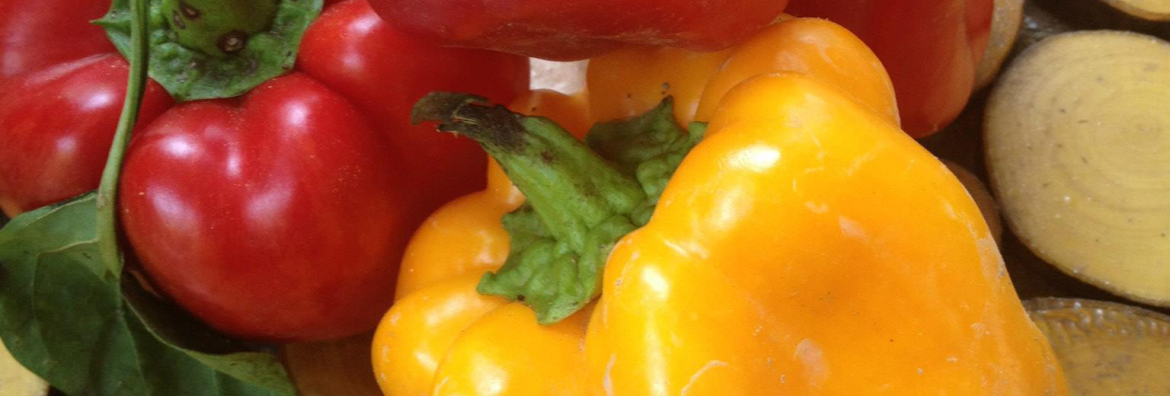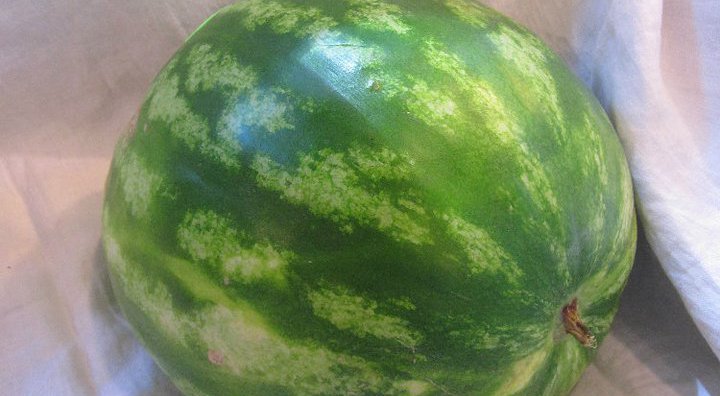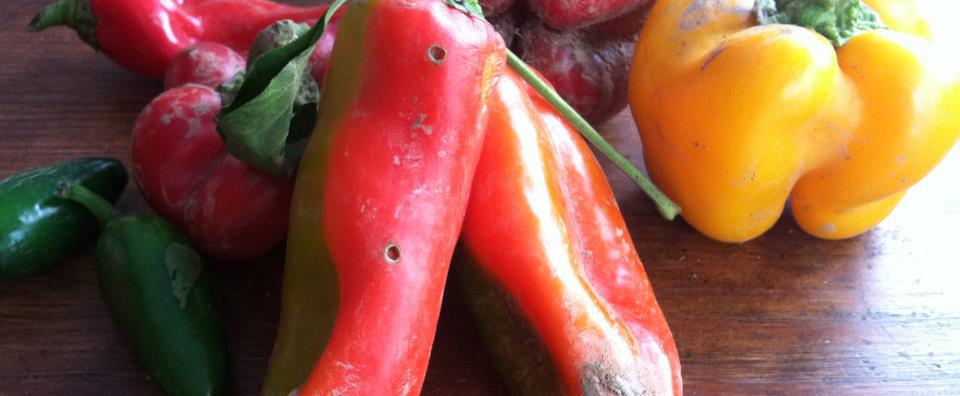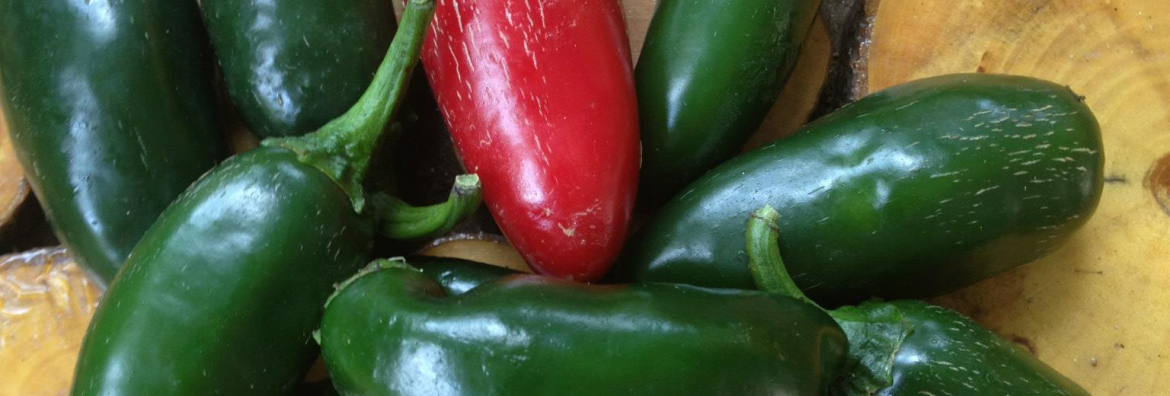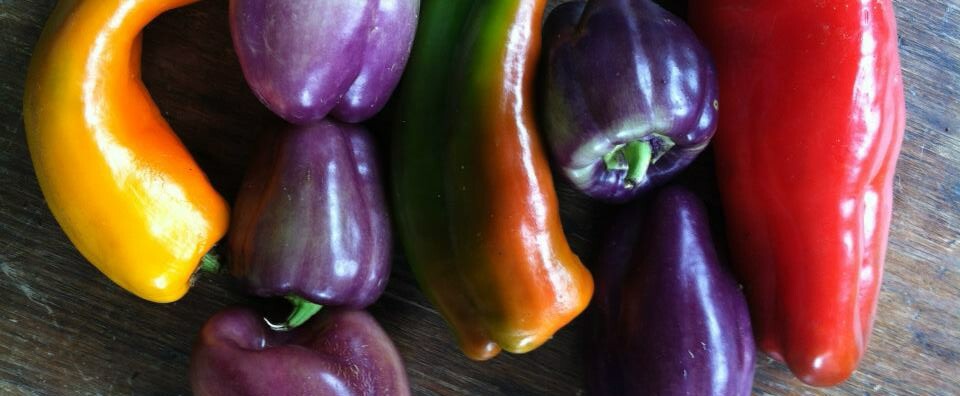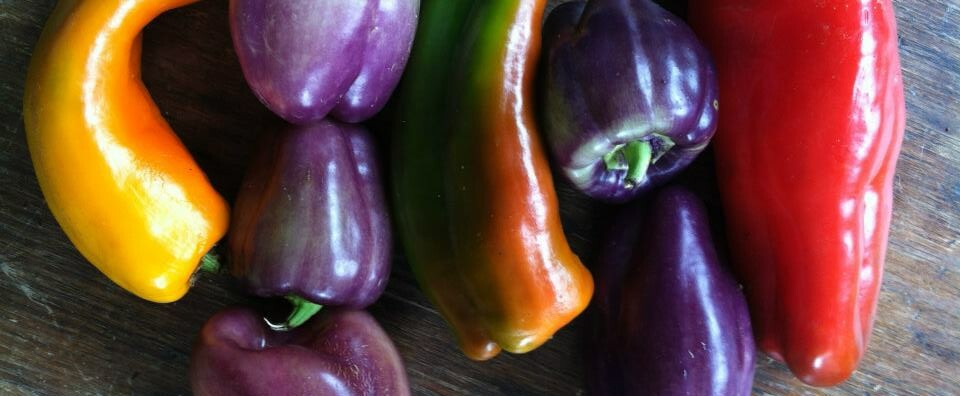Our final pepper recipe also features greens. Now you have an amazing assortment of greens in this week’s box. My box had a few collard leaves, a bunch of mustard greens, all the tops from those hareuki turnips and the greens from the kohlrabi. I have to say that the kohlrabi bulbs are so small (believe me, they’ll get bigger as the season goes on) that I just cleaned them and sliced them up to eat raw with the hareuki turnips. Then the greens went into the sink with all the others. I’ll be making the gumbo z’herbes we featured last year. I can’t find the recipe in the archive, so I’ll make a note to include it next week.
Anyway, here’s a recipe from chef Eddie Hernandez of Taqueria del Sol, also demonstrated last year at the Peachtree Road Farmers Market. It uses greens and peppers. Hernandez’ version was all collards, but this mixture of greens in the box would work just fine. You cook the greens separately, then add them as an ingredient. Just steam the greens unless you have some leftover from another meal. Love that this will use up some of your jalapenos and tomatoes as well.


